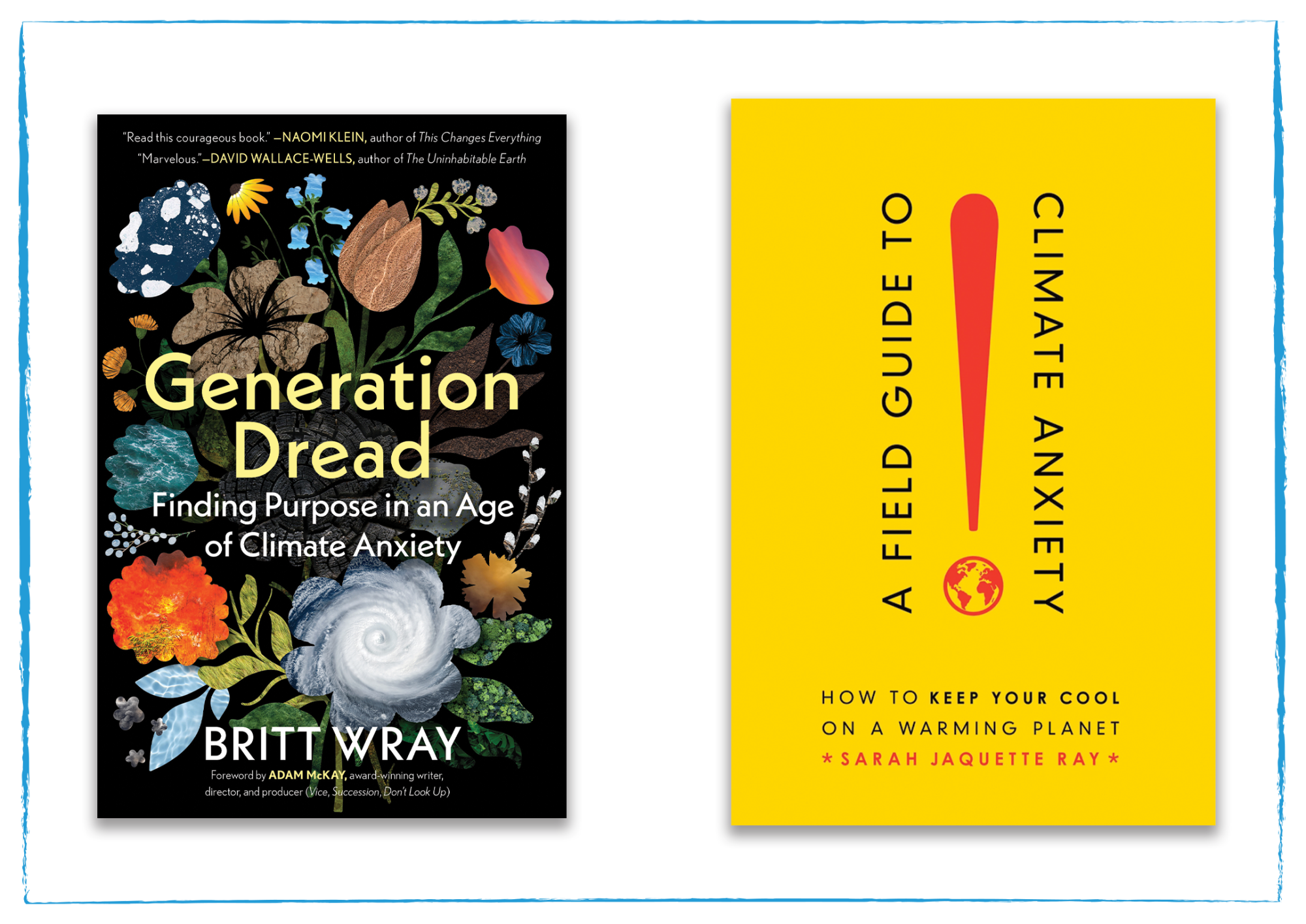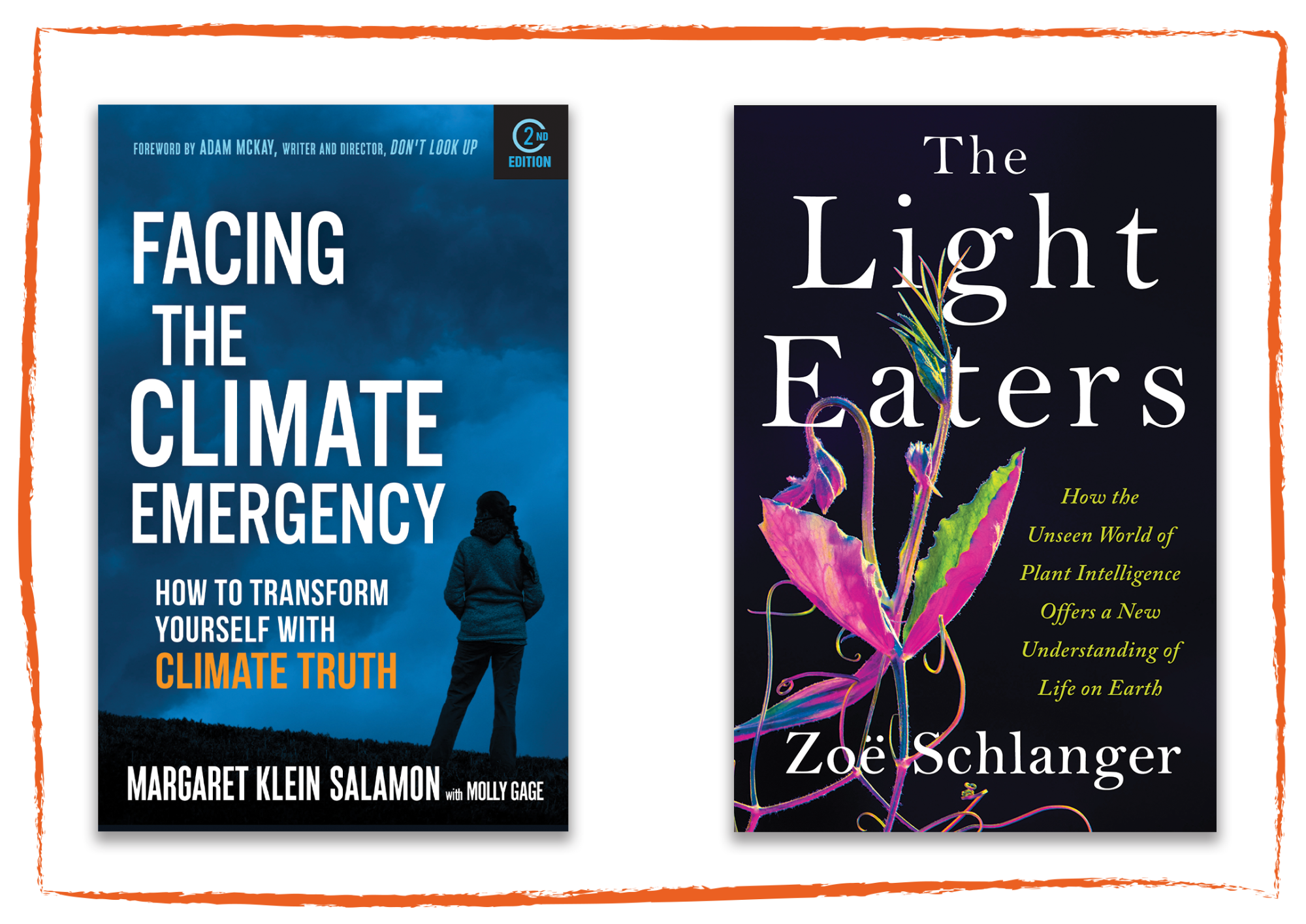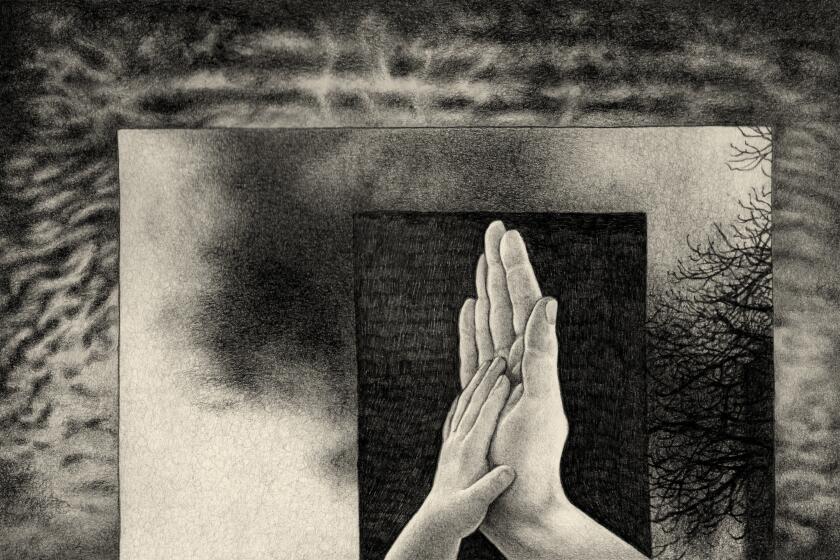- Share via

I’ve been reflecting a lot lately on climate anxiety — and on the feelings of helplessness that have simmered in the hearts and minds of so many friends and colleagues. The future of our planet has become all but impossible to ignore, and it’s not exactly easy digging your way out of a despair that is so deeply connected to, well, everything.
So in true environmental writer fashion, I set out to find answers in the best way I knew how: talking to a wide range of people, and of course, burying myself in books.
I’ve shared my go-to climate reading in the past, but the following list takes a more hands-on (and dare I say, hopeful?) approach. Many of these books helped expand the way I think about climate grief — and where that grief can lead us. I found much-needed wisdom in essay collections, in workbooks for children, even in a “field guide” by an environmental humanist who has spent years unpacking these feelings with her students.
And in the spirit of our new collection of stories centered on the perspectives of young people, I’ve also included some books written by and for the next generation. The questions and concerns weighing on our children and grandchildren, after all, should be a frame of reference for us all.
To that end, I hope these books help guide you and ground you — and perhaps even inspire you to take action, however big or small. We are running out of time, but as these books helped me see more clearly, it is not too late for each of us to do our part and change the world for the better.


“The Story of More: How We Got to Climate Change and Where to Go from Here” by Hope Jahren (Vintage, 2020): A slim but mighty read, this book is conversational, enlightening, even humorous. Rather than filling you with dread and guilt, each chapter makes you think — about the actions you can take and the differences you can make. (Jahren, a geobiologist and beloved teacher, also adapted this book into a young adult version for readers ages 10 and up.)
“Solvable: How We Healed the Earth, and How We Can Do It Again” by Susan Solomon (University of Chicago Press, 2024): Smog, acid rain, lead in paint — these were all massive environmental problems that we managed to overcome as a society, and Solomon makes a compelling case that when it comes to climate change, we can also make it work. An atmospheric chemist at MIT whose research was key to healing the giant gaping hole in our ozone layer, Solomon gives us much-needed inspiration — and some tangible ways forward.

“What If We Get It Right?” by Ayana Elizabeth Johnson (One World, 2024): This book had me at its title. Through a collection of thoughtful essays and interviews, Johnson explores the possibility of getting it right with a visionary group of environmental leaders, activists and other big thinkers working on the front lines. Johnson, who has become a prominent voice on climate solutions, reminds us that there is also joy in working toward a future where we can all thrive.
“Not Too Late: Changing the Climate Story from Despair to Possibility” edited by Rebecca Solnit and Thelma Young Lutunatabua (Haymarket, 2023): I found myself energized by the commitment reflected in each of these essays — many by longtime climate organizers who write with such clarity and wisdom. This powerful anthology just might inspire you to rethink how you’ve been feeling about climate change, and you can even download an accompanying study guide on the book’s website to keep the conversation going.

“All the Feelings Under the Sun” by Leslie Davenport and illustrated by Jessica Smith (Magination Press, 2021): Designed for young readers (ages 10 to 14) but profoundly clarifying for adults as well, this illustrated workbook provides a thoughtful way to build emotional resilience. Davenport, a longtime therapist and educator, developed a number of exercises that also serve as a useful primer on climate science and environmental justice. Truly a great resource for parents struggling with how to talk to their kids about the future of our planet.
“What to Do When Climate Change Scares You: A Kid’s Guide to Dealing With Climate Change Stress” by Leslie Davenport and illustrated by Irma Ruggiero (Magination Press, 2024): Davenport also just published a new workbook designed for even younger readers (ages 6 to 12). With kid-friendly explanations, drawing exercises and a note for grown-ups, this book gives kids and parents the tools and language to process their climate-related emotions.

“The World is Ours to Cherish: A Letter to a Child” by Mary Annaïse Heglar and illustrated by Vivian Mineker (Random House Children’s Books, 2024): And not to forget our youngest readers, I was really moved by this beautifully-illustrated children’s book by Heglar, a prominent writer and essayist on climate justice. She wrote this book for her nephew, who was born in 2018, and I have no doubt every child (and every adult, for that matter) would appreciate the heartfelt reminder that “the world will never stop changing. But you will change it, too.”
What, exactly, is climate anxiety? And how should we cope? Environmental reporter Rosanna Xia explores the many dimensions to our existential dread.
“Lessons for Survival: Mothering Against ‘the Apocalypse’” by Emily Raboteau (Henry Holt, 2024): In a series of evocative and layered essays, Raboteau explores the crises of our time from the perspective of a mother trying to brace her children for the future. With searing observations and profound honesty, she gives voice to the distress that many of us have quietly felt across so many interlinking aspects of our lives.

“Life as We Know It (Can Be): Stories of People, Climate, and Hope in a Changing World” by Bill Weir (Chronicle Prism, 2024): Continuing the theme of parenting in the age of planetary crisis, this book by Bill Weir, CNN’s chief climate correspondent, is also worth a read. Structuring each chapter as a series of letters written to his newborn son, Weir reflects on what he’s learned in the field as both a reporter and a father — and how we might still be able to rewrite this story of disaster. A “hopeful plot twist” is still within reach, he notes. “Old stories got us here, but new ones can get us out.”
“Lessons from the Climate Anxiety Counseling Booth: How to Live with Care and Purpose in an Endangered World” by Kate Schapira (Hachette Go, 2024): Drawing from her experiences working with mental health experts, activists and everyday people processing the realities of climate change, Schapira has put together quite a helpful guidebook. She offers down-to-earth wisdom and provides thoughtful exercises on how to reconnect with your sense of purpose during such tumultuous times.

“Generation Dread: Finding Purpose in an Age of Climate Crisis” by Britt Wray (The Experiment, 2023): Another immensely practical book filled with insights on how we can learn from our own emotions — and find the courage to stay engaged in a productive and purpose-driven way. Wray, a leading researcher on the intersection of climate change and emotional well-being, has a memorable way of framing key takeaways that I’ve found myself quoting time and time again.
“A Field Guide to Climate Anxiety: How to Keep Your Cool on a Warming Planet” by Sarah Jaquette Ray (UC Press, 2020): I’ve had the joy of seeing Ray, an environmental humanist, guide her students at Cal Poly Humboldt with both compassion and tough love. Consider this book an “existential tool kit” that combines insights from psychology, sociology, mindfulness and years of deep listening with the climate generation. (Ray and her colleagues also recently put together a similar “field guild” for educators seeking guidance on how to teach in a burning world.)

”Facing the Climate Emergency: How to Transform Yourself with Climate Truth” by Margaret Klein Salamon with Molly Gage (New Society Publishers, 2020): This book was first brought to my attention by a climate emotions advocate working with Extinction Rebellion, a grassroots movement known for urging climate accountability through nonviolent acts of civil disobedience. Described by many as an epic wake-up call, this book guides you through self-reflection exercises, and if anything, it will help sharpen your own thoughts on climate activism — and how you might see yourself fighting for a more sustainable future.
“The Light Eaters: How the Unseen World of Plant Intelligence Offers a New Understanding of Life on Earth” by Zoë Schlanger (Harper, 2024): This book by Schlanger, a science and environmental writer at the Atlantic, grounded me in ways that I did not know I needed. It’s also a brilliant reminder that these feelings of wonder — about the world humming around us, and the plants and more subtle life forms that we so often take for granted — are also critical to reinspiring our love and desire to care for this planet.

“H is for Hope: Climate Change from A to Z” by Elizabeth Kolbert and illustrated by Wesley Allsbrook (Ten Speed Press, 2024): Kolbert, the Pulitzer Prize-winning author of “Field Notes from a Catastrophe,” “The Sixth Extinction,” and “Under a White Sky,” is back with a striking collection of 26 essays (one for each letter of the alphabet) that examine how we got into this mess in the first place — and how the decisions we make today can still make a difference. With her dark humor and incisive style, Kolbert covers an impressive range of topics that both inform and inspire.
“Diary of a Young Naturalist” by Dara McAnulty (Milkweed, 2022): Last but not least, I hope your heart grows with this beautiful memoir by a 16-year-old poet from Northern Ireland. McAnulty, who is autistic, writes with an earnest and deeply moving connection to the natural world. His observations are filled with joy and curiosity, and “in sharing this journey,” he writes, “my hope is that people of all generations will not only understand autism a little more but also appreciate a child’s eye view on our delicate and changing biosphere.”









